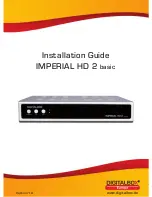
6
Remote controls
It is possible to store up to four radio activators or keyboard users on memory position 1. These radio
codes are memorized in four different internal sub-spaces (circular queue).
Learning remote controls/users
>
during the learning stay in memory position 1 to store all the remote
controls/users: the first, the second, and so on.
Add a remote control/user
>
enter in learning position 1 and if one or more sub-spaces are free, SINT-
13 automatically prepare to store in the first free position without overwrite/delete previous learned
devices.
Change a remote control/user
>
to learn a remote control/user code with all the sub-spaces full (for
example to substitute a lost or damaged remote control), enter in memory position 1 and proceed as
normal learning: the first code will be overwritten.
CTSR/CTSR LIGHT detector
Each CTSR/CTSR LIGHT detector uses one memory position, without difference of which alarm element
(on-board reed, secondary contact, roller and shock) give alarm.
Follows the factory settings for memory position and messages associated:
Memory position
Device
Message
1
Remote control / user 1
1. (
arming
) “External area activation”
Remote control / user 2
Remote control / user 3
2. (
disarming
) “External area deactivation”
Remote control / user 4
2
Detector 1
3. “Sensor 1 detection”
3
Detector 2
4. “Sensor 2 detection”
4
Detector 3
5. “Sensor 3 detection”
5
Detector 4
6. “Sensor 4 detection”
6
Detector 5
7. “Sensor 5 detection”
7
Detector 6
8. “Sensor 6 detection”
8
Control panel or TSR
9. “System TOTAL armed”
10. “System disarmed”
11. “System Partial 1 / Partial armed”
12. “System Partial 2 / External armed”
13. “System Partial 3 armed”
Exit from “radio codes learning”:
open the jumper
JP2
.


























